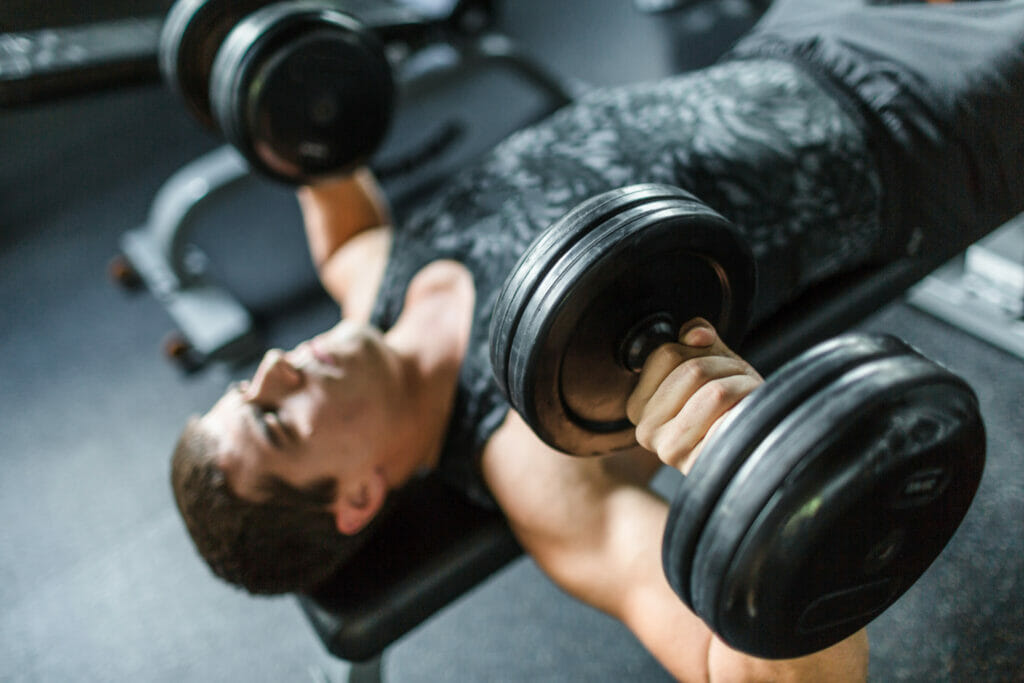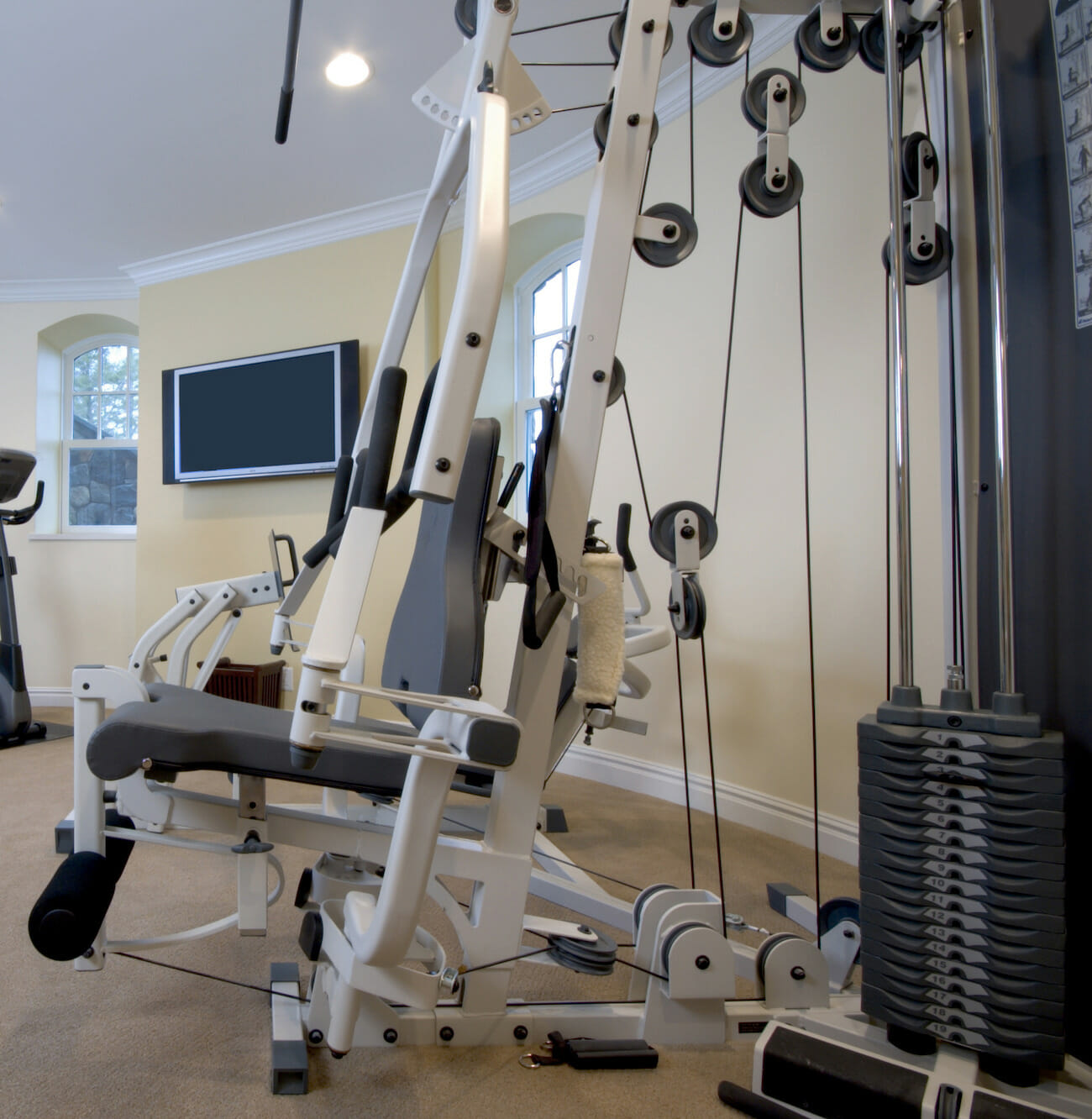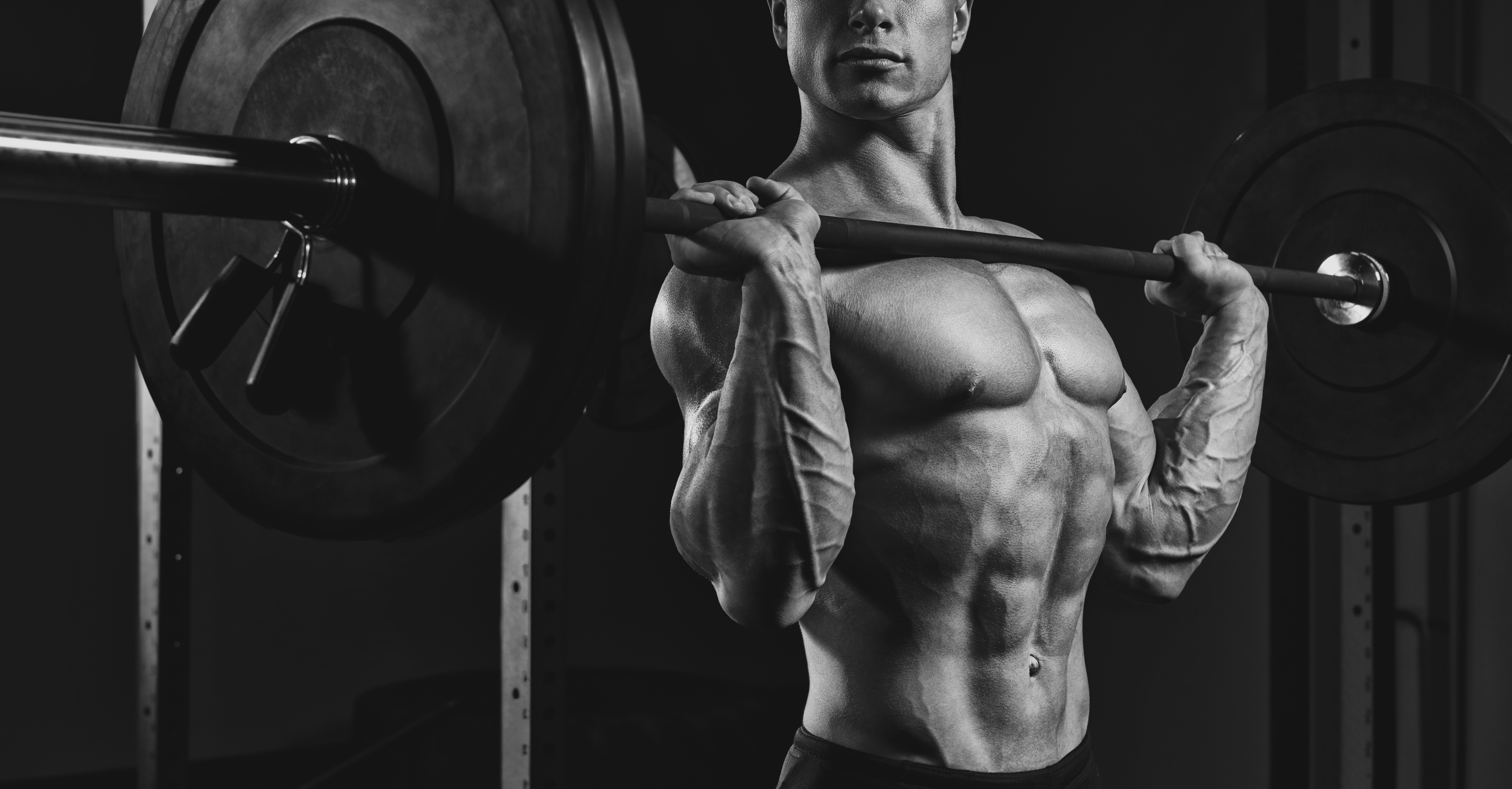
When it comes to resistance training, one could argue that an exercise bench is one of the most important pieces of equipment you need for your home gym.
I mean think about all the stuff you can use your bench for.
You can obviously use it for classic exercises like bench presses, shoulder presses, and dips, but there’s also less obvious moves like flys, skull crushers, decline bicep curls, and various core moves as well.
Oh yeah, you can also sit on it during recoveries, a use that should shouldn’t be discredited.
Regardless of whether you’re using barbells, dumbbells, or bands for your resistance training, a quality exercise bench is a necessity, but how much do we need to invest to ensure we get one?
There are tons of benches out there and they come in a wide range of prices – do we really need to drop $500+ on an exercise bench??
I would say no.
The amount of money you need to spend on your bench will largely depend on what you plan on using it for, but generally speaking, I’d say most of us home-gymers can get away with dropping under $300 for our benches.
But I’m getting a little ahead of myself.
In this article, I’ll go over the stuff we should consider when searching for a new bench, including price.
After reading, you’ll be ready to find the right exercise bench for your home gym
Adjustable vs Flat
If you’ve already started your search, you know there’s a ton of different weight benches to choose from and that their prices vary quite a bit.
That said, the easiest way to start narrowing down your search is to decide whether you want an adjustable bench or a flat one.
Adjustable benches come with adjustable backs, allowing you to set them at various angles, while flat benches don’t – they remain flat (horizontal) at all times.
Adjustable benches are popular because they allow you to perform a lot of exercises that require different angles of incline.
We’re talking exercises like incline bench and incline pec flys, but (depending on the bench), you can also use ’em for exercises like shoulder press or incline rows (an exercise I’ve recently started implementing into my workouts).
Some adjustable benches can also offer decline angles, allowing you to perform moves like decline bench and even sit-ups.
Personally, I think most home gyms would benefit from an adjustable bench, especially if you’re looking for a single bench that can get the job done for everything you need.
But flat benches have their perks too.
Flat benches don’t offer the adjustable angles, but if you don’t perform incline presses due to pain or other reasons, you might not miss this function.
And flat benches tend to offer a little more stability, which can come in handy when performing heavier bench presses.
Plus, flat benches don’t have a gap, which is a necessity for adjustable benches, and they tend to be a little more affordable too.
So, adjustable and flat benches both have their perks, so it all depends on what kinds of exercises you want to be able to do in your gym.
It also depends on whether or not you have the room/budget for multiple benches – you could have a flat bench for bench press and a separate bench for incline presses and whatnot.
Finding The Right Exercise Bench
Once you’ve decided on what kind of bench you want (adjustable vs flat), it’s time to start comparing options.
This can be a little daunting, but it doesn’t have to be – having a game plan can help you compare benches objectively and find the best option in your price range.
When comparing benches, I suggest you consider the following:
Weight Limit
Regardless of whether you’re going with an adjustable or flat bench, you’ll want to pay attention to the bench’s weight capacity.
Not only does this spec give ya a great idea as to how “heavy-duty” the bench is, but it literally tells you how much weight you can safely lift while using said bench.
This is more important for the serious lifters because even really affordable benches usually come with at least a 500 lb limit, but keep in mind this counts your bodyweight too.
So, if I weigh 200 lb and I’m on a bench with a 500 lb limit, that means I shouldn’t be benching more than 300 lb (personally, that wouldn’t be an issue, but a guy can always dream…)
But certainly something to consider for larger and more talented lifters.
Nicer weight benches come with limits in the 700 – 1000 lb range, which should be able to handle even the most gifted lifters.
Bench Weight
You might want to consider the weight of the bench itself too, especially if you think you’ll be moving it regularly from one room to another.
I think having a heavier bench is generally a good thing because it makes for a more stable base, but heavier benches will certainly be harder to move around.
Most respectable weight benches come with built-in transport wheels, but still.
Cheaper benches can weigh as little as 25 lb or so, while higher-end benches can weigh around 100 lb.
Heavier benches are constructed out of thicker steel and larger components, meaning they usually come with higher weight limits too.
Warranty
I stress the importance of checking out warranties for any equipment you’re considering and benches are no exception.
The warranty gives you an idea as to the quality of the bench and seeing a longer warranty is indicative of better overall build quality.
Cheaper benches usually come with shorter warranties and more expensive benches tend to come with longer warranties – this is how it goes.
Affordable benches might come with a 30 day guarantee, while higher-end options might come with lifetime frame warranties.
That said, just because a bench comes with a short warranty doesn’t mean it won’t last.
I had a CAP Utility Weight Bench for 10 years and it never missed a beat and it only came with a 30 day warranty…
It wasn’t the nicest bench in the world or anything, but it was comfortable enough and got the job done.
Anyway, it’s a good idea to compare warranties, but a poor warranty doesn’t have to necessarily be a deal-breaker.
Pad Gap
The pad gap is only a concern if you’re going with an adjustable bench, so if you’re looking for a flat bench you can skip this one.
The pad gap refers to the separation between the seat and backrest on adjustable benches and having a smaller pad gap is always a good thing.
Basically, the smaller the gap, the more comfortable the bench is gonna be.
If you’re bench has a larger gap, you’ll likely notice it most when you have it folded flat because you might find yourself having to adjust your positioning so that your butt doesn’t fall into the gap.
Some brands tell ya the size of the pad gap, others don’t, so it can be hard to compare this spec.
But finding a bench with a pad gap less than 2″ is a good idea when it comes to comfort.
Generally speaking, budget-friendlier benches tend to come with larger gaps, while higher-end benches come with smaller ones.
Adjustment Angles
This is another that only has to do with adjustable benches, but you’ll notice that the number of adjustment angles will vary between benches.
Many come with 7-9 adjustment positions and having more or less might not be that big a deal for ya.
Personally, I only regularly use 2-3 of the 6 positions our bench offers, so it doesn’t really matter to me.
But again, it all depends on personal taste.
Having more adjustments gives you more options with fine tuning the angle for things like incline press and shoulder press.
Speaking of which, I like having an adjustable bench that can be adjusted to a 90° position (sitting upright) for the sake of shoulder presses, so this could be something to check for if you like that idea too.
And as mentioned earlier, if you want a bench that can decline, you can check for decline adjustment angles as well.
Price
The specs and features mentioned above are important, but we all know price and budget are paramount for the majority of us.
And weight benches come in a pretty wide range of prices.
There are budget benches out there that cost under $100 and there are commercial benches that go for over $1000 – so how much should we be looking to spend??
As with a lot of fitness products, the best options for the majority of home users are found somewhere in the middle.
The truth is, most of us don’t need an $800 weight bench to get the job done because most of us aren’t lifting the kinds of weights where having an upgraded super-duty bench makes a big difference.
Higher-end benches that cost over $500 are heavier-duty and able to securely support higher weights, so they make more sense for elite weight lifters.
But if you’re regularly benching under 300 lb, you can save yourself a lot of cash and go with a more affordable bench.
Personally, I think most folks can get away with spending somewhere in the $200 – $300 range because there are some great benches at this price point.
And I’m talking adjustable benches here, if you want a flat bench you can do fine spending even less.
I mentioned that I used a CAP bench for a decade or so.
Well, that bench goes for around $170, making it quite affordable as benches go, and it worked great.
The pad gap was pretty large (2″ or so, maybe a bit larger), so you to adjust yourself sometimes, but the bench itself held up great.
We ended up donating it when we upgraded, but it was still working fine when we got rid of it.
We upgraded to REP’s AB-3100 and it’s a much nicer bench, but that only costed around $300.
Compared to the CAP, it’s a lot heavier-duty, comes with a thicker pad, and has a smaller pad gap.
The only complaint I have is that there’s only 1 foot in the front of the bench, making it a little unstable when sitting and reaching down for dumbbells (it’ll rock a little side to side).
But overall, I think our bench works great and at $300 was a nice investment for our home gym.
Final Thoughts
To answer my original question again, I think most of us should be looking to spend $200 – $300 on a weight bench.
For this price, you can get a very solid adjustable bench with a nice warranty.
And if you’re looking for a flat bench, you can cut about $100 off that budget and still be fine.
If you’re a serious weight lifter who can move some serious weight, you’ll likely want to invest a little more to make sure you have a bench that can safely support higher limits.
When comparing benches, know that going with adjustable benches, benches with decline capabilities, and benches with additional attachments or features will increase the price.
Overall though, given how expensive everything else tends to be these days, I think weight benches are priced quite reasonably.


